Whether you’re having a conversation with a salesperson in a store, making a post on an online menswear forum, or just wanting to know the details about a product you’re purchasing online, knowing specific menswear terminology will definitely be helpful to you. So, today, we will cover 25 style terms that we think will be helpful for any gentleman.
- 25 Essential Menswear Terms To Know
- 1. Business Casual
- 2. Sprezzatura
- 3. Blazers & Sport Coats
- 4. Odd Jacket
- 5. Canvas
- 6. Fused Jacket
- 7. Cupro
- 8. Drop
- 9. Gorge
- 10. Surgeon’s Cuffs
- 11. Three-Roll-Two
- 12. Tweed
- 13. Donegal
- 14. Grenadine
- 15. Madder
- 16. Twill
- 17. Oxford Cloth
- 18. Break
- 19. Rise
- 20. Welt
- 21. Vamp
- 22. Oxford Shoes
- 23. Derby Shoes
- 24. Broguing
- 25. Wingtip
- Conclusion
- Outfit Rundown
25 Essential Menswear Terms To Know
Of course, we’re not going to go over very basic terms here, as we’re assuming that every gentleman will know what things like lapels, corduroy, or cufflinks are–we’ll be going into a bit more depth than that. On the other hand, there are also far too many different specific terms for things like shirt collars, tie knots, and overcoat styles to discuss in just one post. Therefore, what we’ll cover today are terms that are commonly used in menswear circles, but not necessarily understood by everyone.
Remember that when you have a true interest in classic menswear, you not only want to walk the walk by looking stylish, but you also want to be able to talk the talk–which is to say, to know the specific menswear terminology necessary to discuss the subject with others in depth.
1. Business Casual
Let’s start with a term that most people have heard in relation to dress codes but that can be confusing to some: business casual. This would refer to clothing that can be worn in the office but that is less formal than a full suit. Essentially, this boils down to something like a dress shirt and pants including something like chinos but usually, not jeans. It could include an outer layer like a sport coat or a sweater but you might forgo the necktie and if a tie is worn, it will usually have a more casual texture like a knit or a grenadine.
The final point we’ll make here is that business casual is still worn with leather dress shoes and never with sneakers. For more information on business casual, you can consult our full guide and if you’d like to learn more about the closely related term Smart Casual, our Dress Code Primer should have you covered.
2. Sprezzatura
Sprezzatura a term that you’re likely to hear a lot in the online menswear world. This is an Italian term first used during the Renaissance to describe looking elegant without making it appear like you’re trying too hard to do so. In other words, you give the impression that you’re not worrying too much about looking perfect. This could be manifested by doing something like leaving some of the buttons undone on your cardigan or not putting the back blade of your tie through the keeper loop and just letting both blades hang freely.
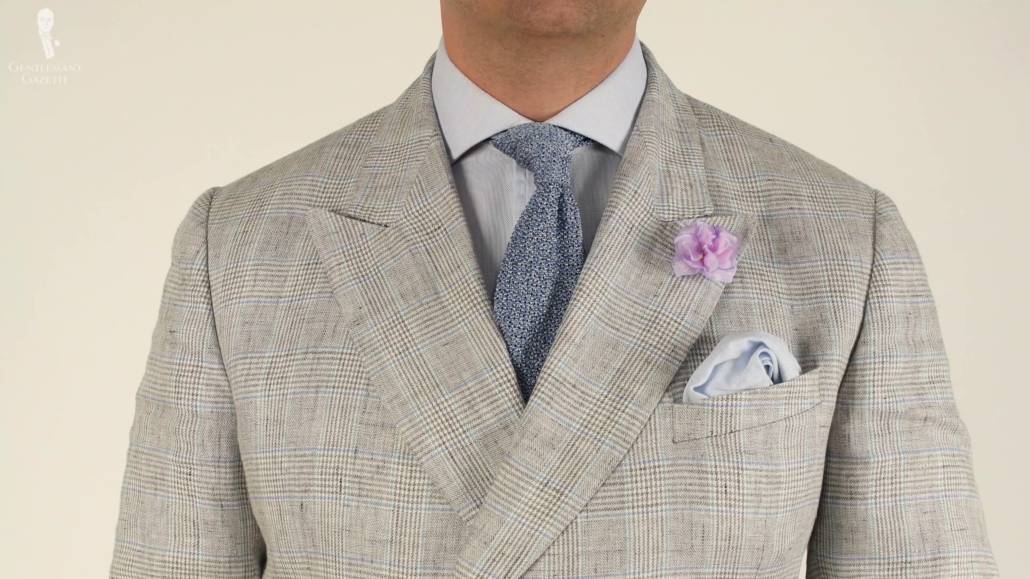
Essentially, it communicates a vibe of looking elegant and nonchalant, at the same time. Looking comfortable but not sloppy in your clothes can take some time to master but now that you’re familiar with the overall theory, you should be able to work on it.
3. Blazers & Sport Coats
Now, let’s look at some technical terms that are specific to different types of clothing. Our next term is a bit of a twofer here as we’re covering both blazers and sport coats. It may seem obvious at first what a blazer or sport coat is but in fact, these two terms don’t describe the same thing even though stores will often use them interchangeably. Yes, both are tailored jackets that are typically worn with trousers in a different fabric or color but most of the time what you’ll see referred to as a blazer is going to be a sport coat.
A blazer is the more formal of these two jacket styles usually in a solid color. Although it can sometimes have striped patterns, typically though, a jacket with any other type of pattern is going to be a sport coat. A blazer has contrasting buttons often in metal and will sometimes have a crest on the chest pocket. This is because blazers have historically been associated with yachting clubs and other kinds of exclusive organizations.
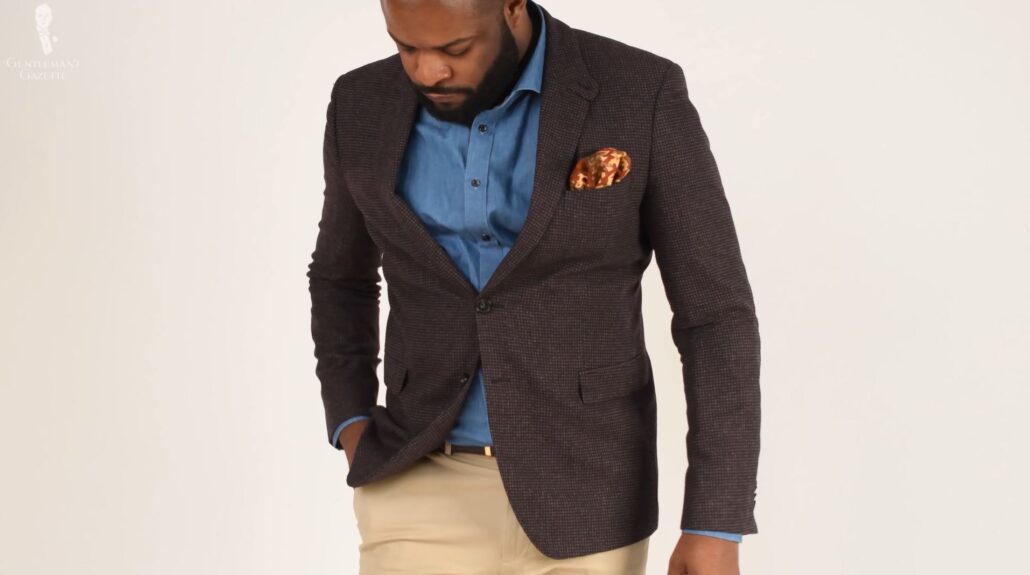
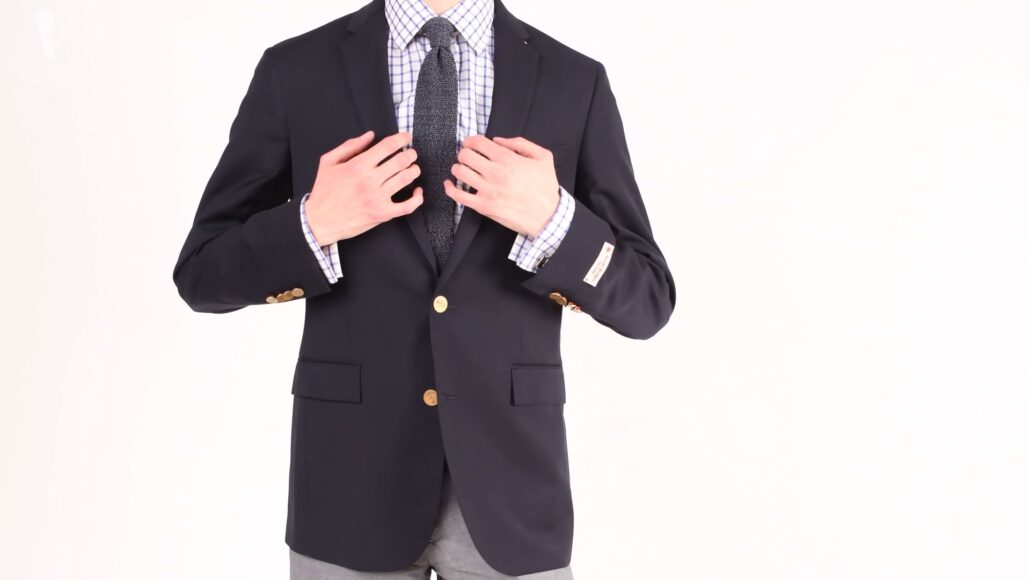
Whether you’re dealing with a blazer, sport coat, or suit jackets are probably the most complex garment in menswear and as such, they have many specific terms associated with them, which we’ll cover in terms 4 through 13.
4. Odd Jacket
Generally, when we hear the word “odd” today, we think of something strange, weird, or unusual–but this is a more traditional sense which is to say, that an odd jacket or indeed odd trousers are simply garments that are not originally part of a set. They’re individual garments and can, therefore, be mixed and matched with others.
So, because blazers and sport coats are their own garments, they’re both naturally odd jackets and while a suit jacket is part of a suit, a matching set, it can also be worn as an odd jacket if worn with odd trousers.
5. Canvas
One of the most important things to consider when you’re buying a jacket of any type is the next term in our list: canvas. This describes an inner flexible layer usually made of wool and horsehair that will sit between the outer visible fabric of the jacket and the lining inside. The canvas helps a jacket to mold closer to the shape of your own body while you’re wearing it. Half-canvas will cover just the chest area whereas full canvas will come all the way down the front of the jacket.
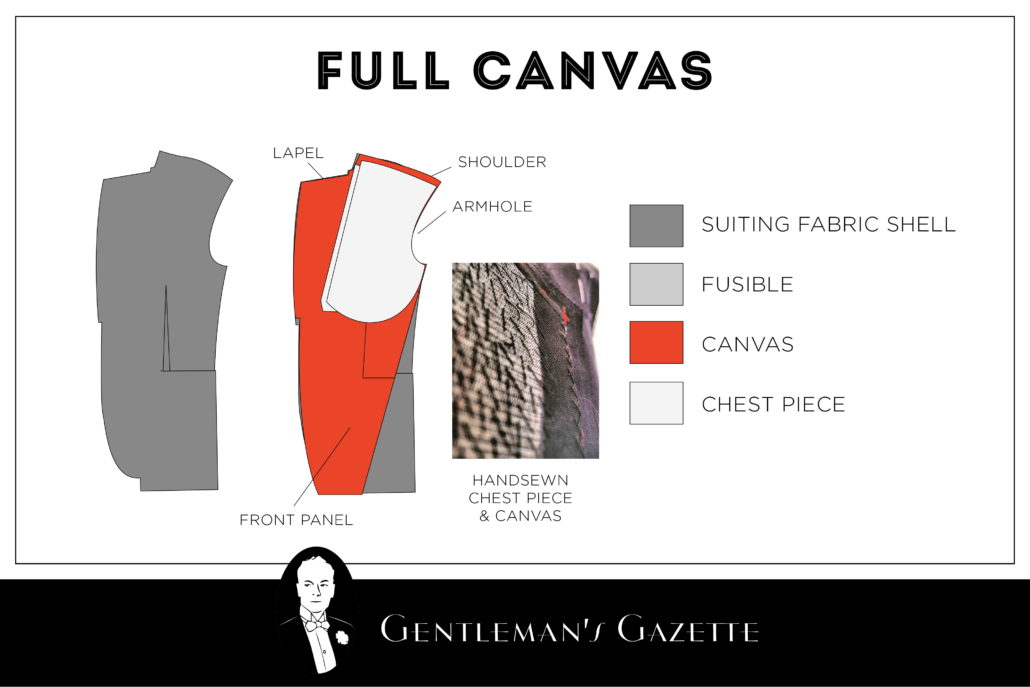
6. Fused Jacket
In contrast to canvassed jackets, fused jackets feature various materials that are glued to the underside of a jacket’s outer fabric in order to help stiffen it. Unlike canvassing, fusing doesn’t always shape well to the body and it can eventually make a jacket look unsightly as it comes undone, leading to puckering and warping over time. Generally speaking, then a fused interlining will be a sign of a cheap jacket.
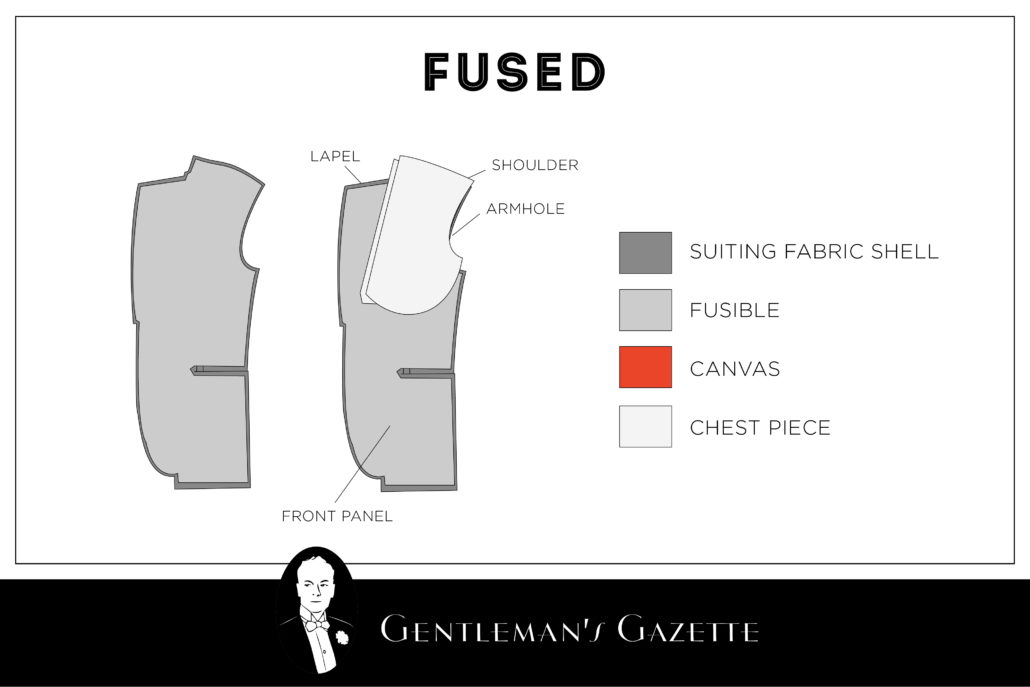
7. Cupro
Speaking of linings, the actual lining that you can see when you hold a jacket open is next term: cupro. It will often look like silk but it’s generally more durable. You may also hear this lining referred to as Bemberg, which is in fact, a brand of cupro. It’s often called the king of linings and is definitely preferable to cheaper alternatives like polyester.

8. Drop
When you’re considering the fit of a suit, drop is definitely a term you’ll want to know. This refers to the difference in inches between a jacket’s chest measurement and the measurement for the waist of the trousers. The standard drop size is a six. So, for example, if you have a size 40 regular jacket the standard trousers are going to be in a 34 waist size.
The higher the drop measurement, the more likely it is that the suit will be slim fit as there will be a greater difference between the chest and waist measurements.
9. Gorge
As far as the appearance of a jacket goes, the gorge is also an important feature. This is the point where a jacket’s collar and its lapel connect together usually forming a notch on many jackets but of course, countless other lapel styles do exist as well.
If the gorge is high up as it is on modern jackets this is usually to create an impression of height or to make your chest look broader. A lower gorge, meanwhile, is a sign of a more classic and traditional jacket and should make your shoulders look wider.
10. Surgeon’s Cuffs
As the menswear movement has grown in recent decades. Some features that used to be hallmarks only of high-end jackets are now more mainstream. One example of this would be a surgeon’s cuffs. This term describes functional buttons on the sleeves of a suit jacket and dates to the 19th century when surgeons would operate still wearing their jackets and wanted to make rolling up their sleeves easier.
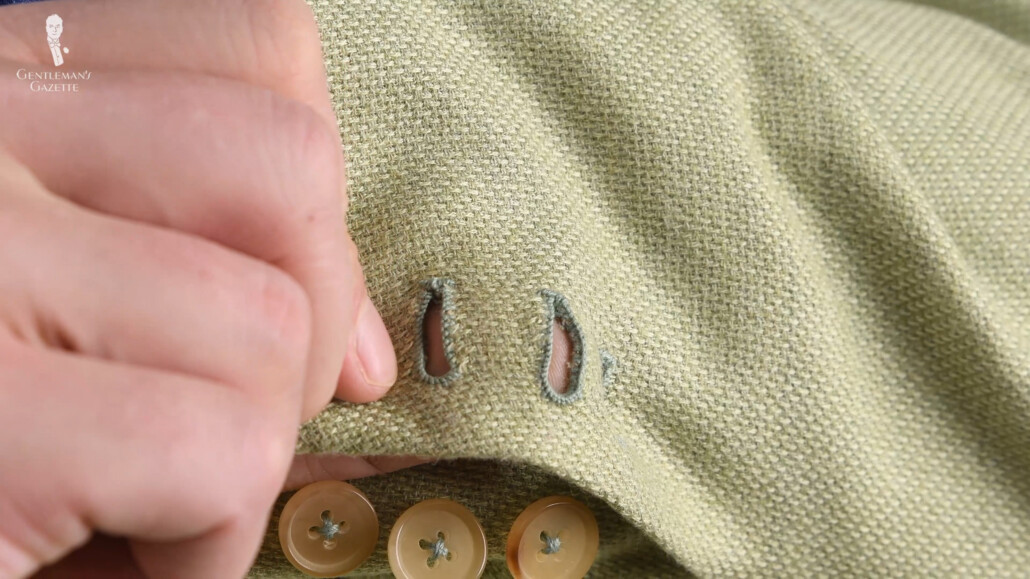
These days, you’re not likely to roll up the sleeves of any of your jackets but some men like to have working buttonholes on their jackets and will often leave the first button open to show that the buttonholes are indeed functional. However, as we’ve said, this is a feature that while once exclusive is now more mainstream, so a jacket with working cuffs doesn’t necessarily mean that it is high-end. In fact, having a ready-to-wear jacket with surgeon’s cuffs might actually make it harder to alter the sleeve measurements, if you need to. So, this may be something to shy away from unless you’re having a jacket made bespoke.
11. Three-Roll-Two
The next term is a bit of a strange one, but it describes how a jacket is buttoned. Traditionally, most men’s jackets will have either one, two, or three buttons although jackets with more do exist. If a jacket does have three buttons and the top button is clearly visible, not obscured by the lapel then that top button is meant to be buttoned.

However, if the lapel rolls over this top button or if it’s pressed down to fully obscure it, that top button is not meant to be buttoned and the jacket can be referred to as a three-roll-two or sometimes a two and a half button jacket.
12. Tweed
When it comes to fabrics that make up sport coats, things like cotton, linen, wool, and silk are well known but if a jacket is made out of tweed, what is it actually made from? Tweed is not a fully unique fiber but actually, a kind of rough wool that originated in Scotland and Ireland as a kind of hard-wearing, cold weather cloth. Tweed is tough and tear-resistant while also resisting moisture which makes it an ideal choice for wearing out in the countryside when the weather is less than ideal.
13. Donegal
You may also have heard of Donegal. This is a type of tweed where different colored yarns are woven into the main yarn. The result is a vivid speckling that’s definitely eye-catching and handsome. Donegal is named after the county in Ireland where it first originated.
14. Grenadine
In a similar fashion to tweed, grenadine refers not to a specific type of fiber but rather to a weaving process. Grenadine is silk that is woven in a special way on all looms. The resulting ties have a gauzy, open weave and they’re a great alternative to smoother printed silk ties because they can be dressed up or down depending on the outfit.
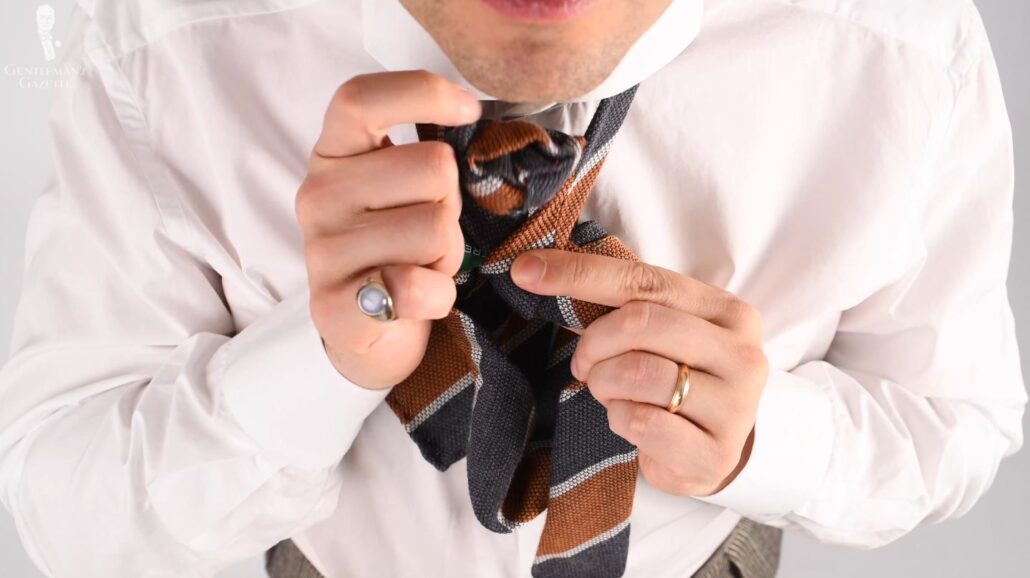
15. Madder
A lesser-known form of a printed tie is madder; also called ancient madder. It’s named after a plant whose roots have been used to dye silk for thousands of years. Natural madder dye resulted in a vivid red color but it has now been synthesized and can be produced into a range of other bright color options.
The silk is also treated in a specific way before it’s dyed and the result is a distinctive, chalky hand feel. Madder ties are most commonly made in either paisley or repeating geometric patterns. You can consult our guides on madder and grenadine for more information, and of course, we sell ties in both materials in the Fort Belvedere Shop.
16. Twill
Interestingly, compared to jackets, there are fewer terms related to shirts and trousers that you’ll really need to know in order to make the right decision or look your best. We’ll start with some shirt terms with twill. Twill is a kind of weave that creates a diagonal ribbed pattern in the fabric which is usually cotton.

When it comes to shirts, this weave results in a subtle sheen which means that twill shirts are especially good for formal occasions and can be worn well with something like a printed silk tie. Twill is a term that you’re likely to see a lot because a twill weave can also be used on trousers, ties, and jackets, in addition to shirts.
17. Oxford Cloth
Meanwhile, Oxford cloth is in some ways, the opposite of twill, at least in terms of formality. This is a cotton fabric woven in a basket weave pattern using multiple crossing threads. Oxford cloth is usually thicker and less fine than other dress shirt weaves which means it’s slightly more casual, but this isn’t necessarily a bad thing as it means that oxford cloth shirts can be dressed up or down in your ensembles.
The weave is also durable and easy to wash and it will get softer with age. Oxford cloth shirts, more often than not, will have a button-down collar which leads to a bonus term that you’ll often see: the OCBD, or Oxford cloth button-down shirt.
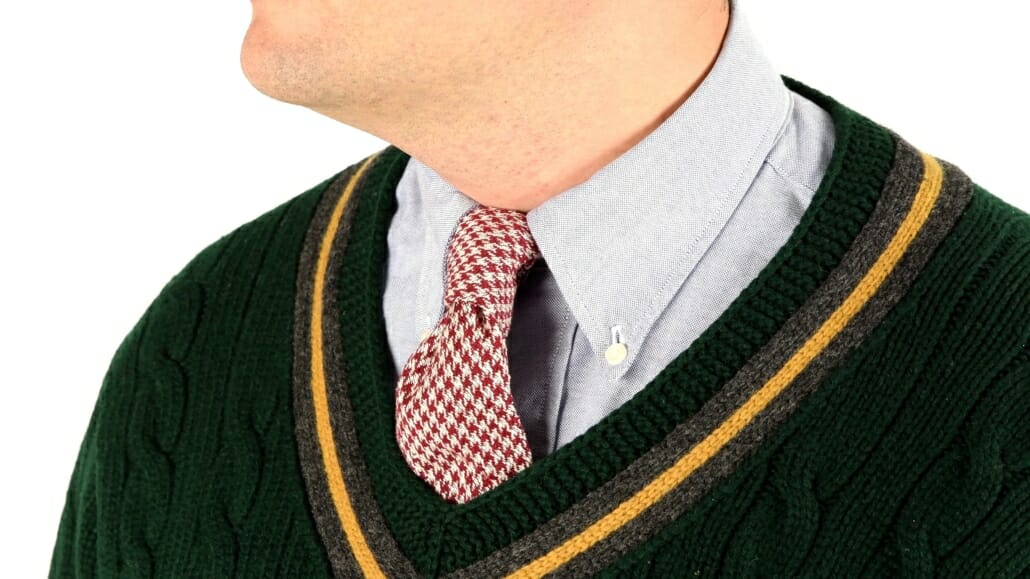
18. Break
Moving down the outfit, let’s now cover some trouser terms that will be important to getting the correct look and fit, starting off with the term break. This term refers to how much the fabric at the bottom of your trouser leg will fold or crease as it hits the tops of your shoes. No break indicates that there is no folding or creasing of the fabric and thus nothing breaking the clean vertical line of the trouser leg. This is especially popular with modern trousers.
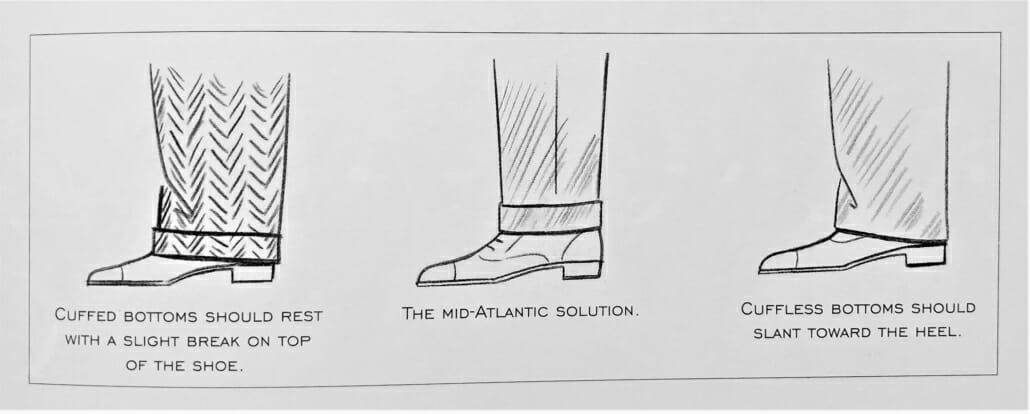
A half break will indicate a bit of folding and a full break will feature a well-defined crease at the bottom of the trouser leg. Anything more than a full break, however, and you’re probably going to be dealing with fabric pooling around your ankles is definitely not a good look.
19. Rise
This is a term that’s often overlooked or not well known. This is the distance between the crotch seam of the trousers and the top of the waistband. While trousers do technically have both a front and back rise, the front rise is typically going to be more important for the look of your trousers.

A high rise will make your legs look longer as your trousers are going to sit at your natural waist, in line with your navel. This is a more traditional style in contrast to more modern styles, which favor a lower rise, where the pants will typically sit around the hips and will make your legs look shorter overall.
What rise you’ll want to wear depends somewhat on taste as well as on your proportions but if you’re going for a traditional look and don’t want any of your shirt to be exposed underneath your buttoned jacket, a medium to high rise will probably be best.
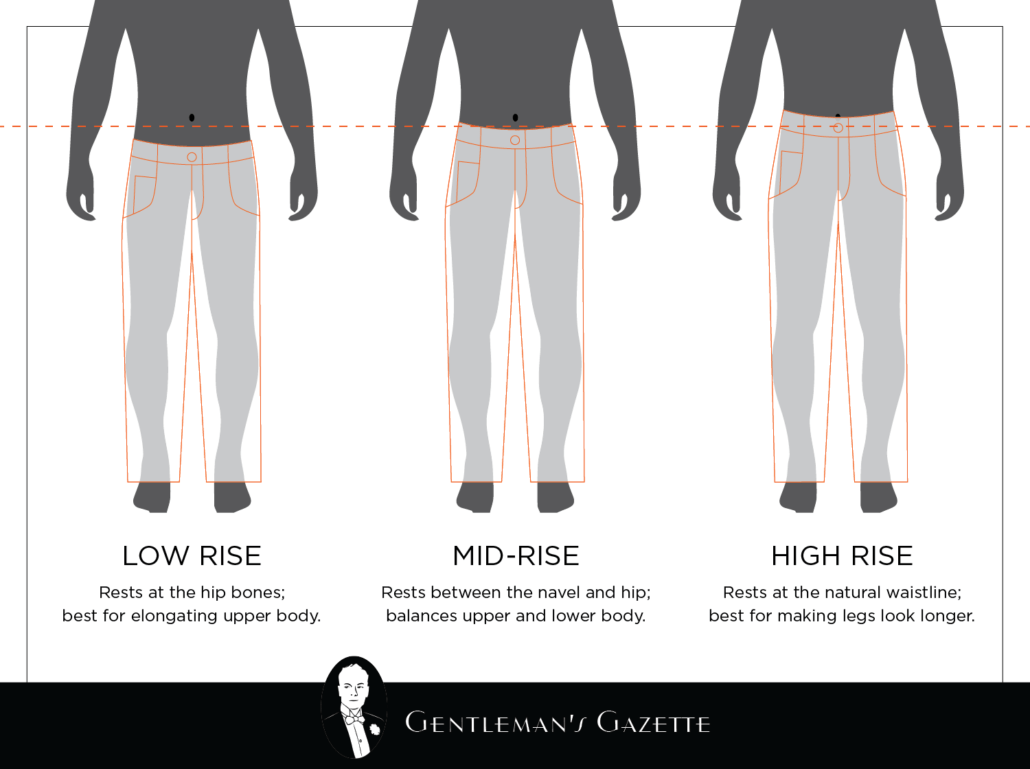
Our final terms today all deal with footwear. As with jackets, shoes have a number of highly technical things that go into their construction so it’s not surprising that there are a number of related specific terms.
20. Welt
An important term to remember when discussing shoes is our next pick: the welt. It is a narrow strip of material holding the shoe together. Traditionally, it’s made of leather but it can be made of rubber or plastic as well and it essentially acts as a gasket between the upper and the sole of the shoe. The most well-known shoe construction process to feature a welt is Goodyear welted construction which uses a machine to make a curved stitch through the upper insole and the welt. This type of welt stitch can also be done by hand where it’s then most correctly called a hand welt whereas a Goodyear welt is technically done only by machine.
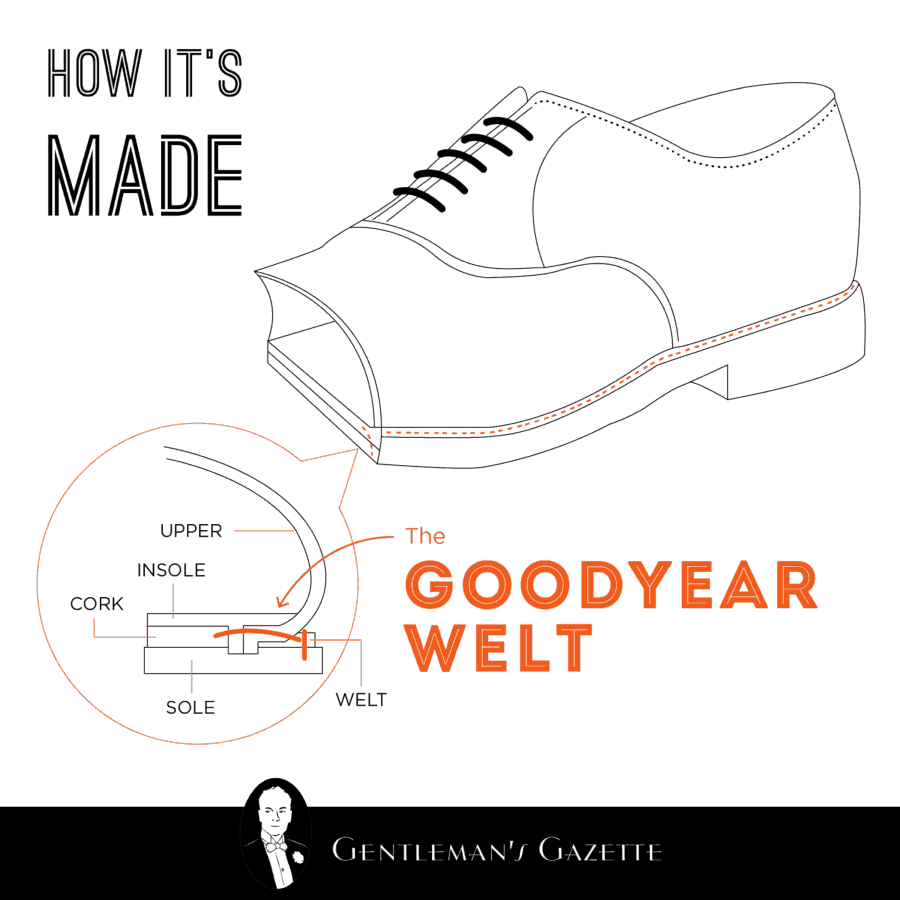
Some construction methods, meanwhile, don’t make use of a welt like the other major method: Blake construction. This is instead held together by a stitch that runs through the insole and the upper to the outsole. Several other stitching methods do exist such as the Blake rapid stitch which allows for an extra outsole to be put on; Norvegese or Norwegian construction which also features no welt has the upper turned outward and running parallel with the outsole and has both an outsole stitch and an inner Norwegian stitch, and storm welting which is its own method but it borrows elements from both Goodyear welting and Norwegian and can be executed either way.
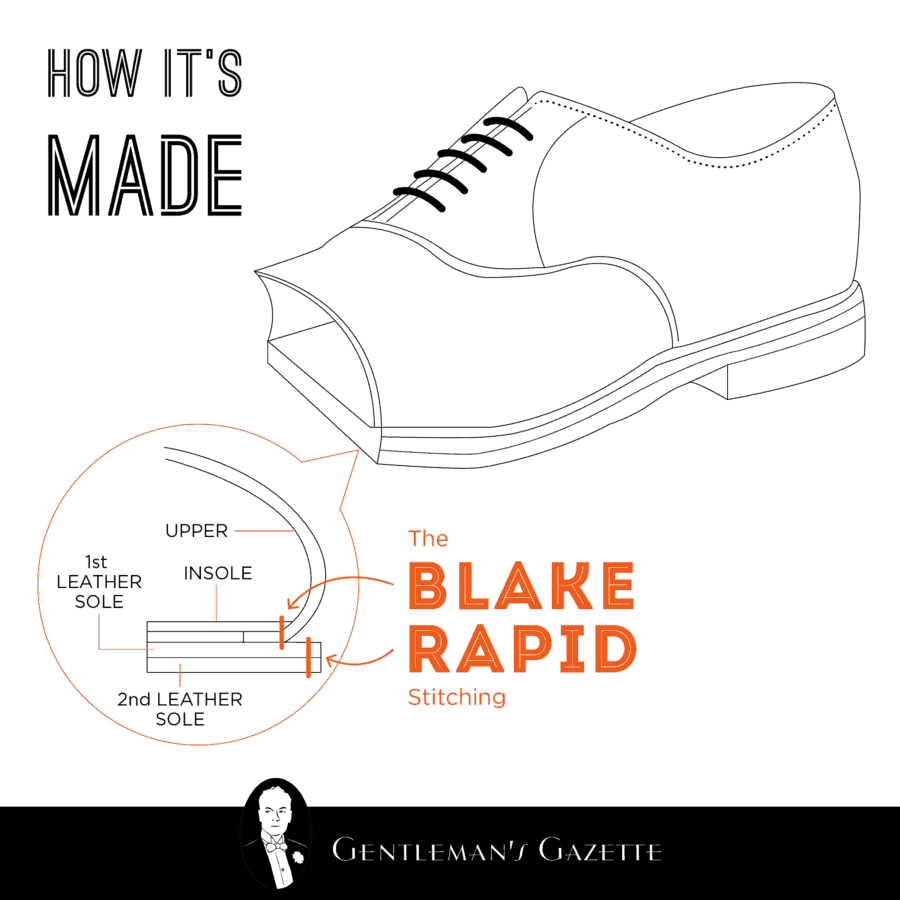
This can all be a bit confusing especially since modern Goodyear welting also makes use of a rapid stitch for sturdier construction but in the broad strokes, know that a Goodyear constructed shoe features a welt whereas a Blake constructed shoe does not. By the way, not all shoes have this type of welted construction and cheaper shoes, in particular, are going to have what’s called cemented construction whereby the shoe’s sole is simply glued to the upper. As you can imagine, this isn’t a very high-quality method and is typically just going to be found in cheap shoes that will wear out quickly.
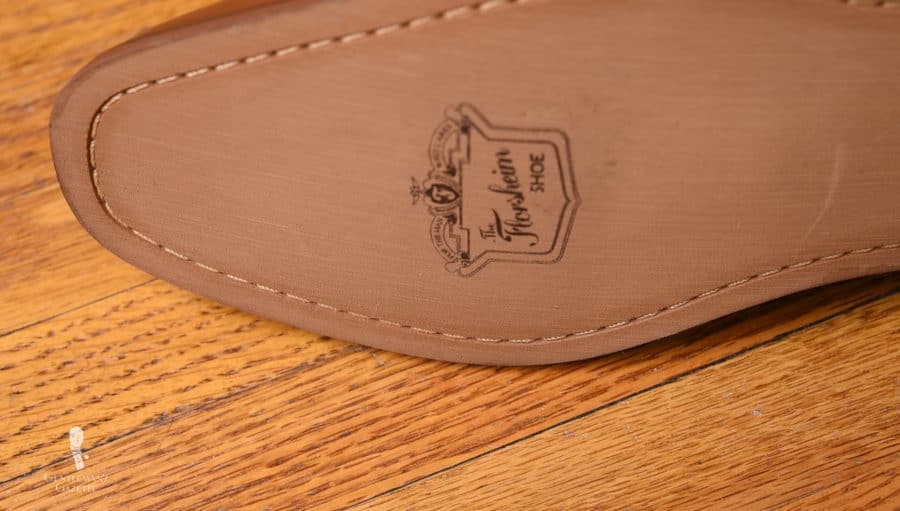
Italian shoes tend to feature Blake stitch soles whereas English and American shoes will typically feature a Goodyear welt. There are exceptions, of course. Blake soles are cheaper and more flexible to break in, but if they experience too much wear, repairing them can be a bit more difficult. Meanwhile, Goodyear welted soles are more sturdy and therefore usually more expensive, however, if you really love your pair of shoes having a Goodyear welt means that they can be more easily resoled multiple times, so you’ll be able to wear them for longer.
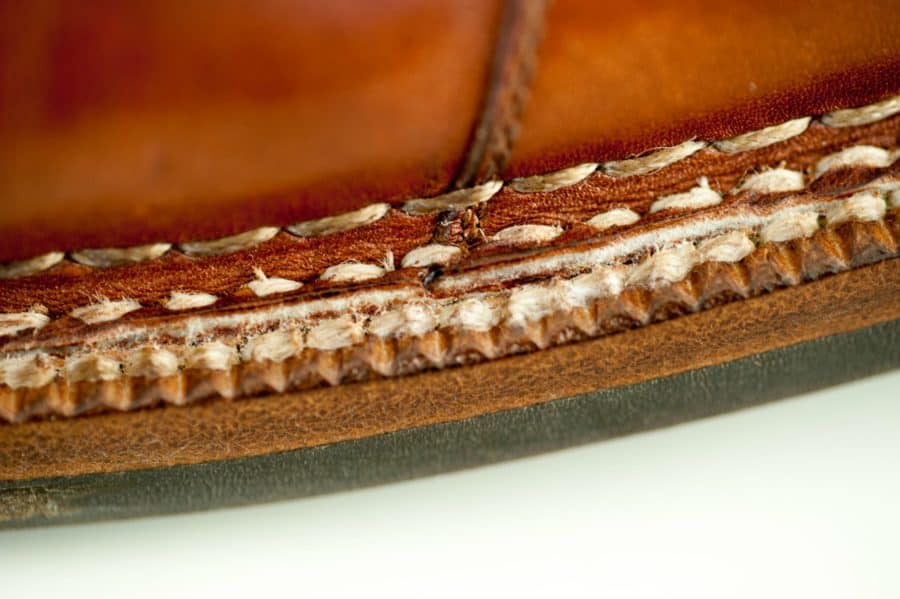
Both blake stitch shoes and Goodyear welted shoes have their advantages and disadvantages so we’d suggest that if you want to learn more, you check out our article on the Anatomy of a Dress Shoe.
21. Vamp
If you polish your own shoes, it’s important to know the term vamp. The vamp is the part of the shoe between the toe and the lacing area and it’s the part that will often bend or crease as you break a shoe in more.

You can minimize creasing of the vamp by using things like shoe trees and when polishing, remember not to apply too much cream or certainly wax polish to the vamp as it can crack when it bends. The vamp can also help you to understand the fundamental differences between the next two terms on our list.
22. Oxford Shoes
An oxford shoe is determined by its closed lacing system, where the shoelace eyelets are sewn under the vamp.
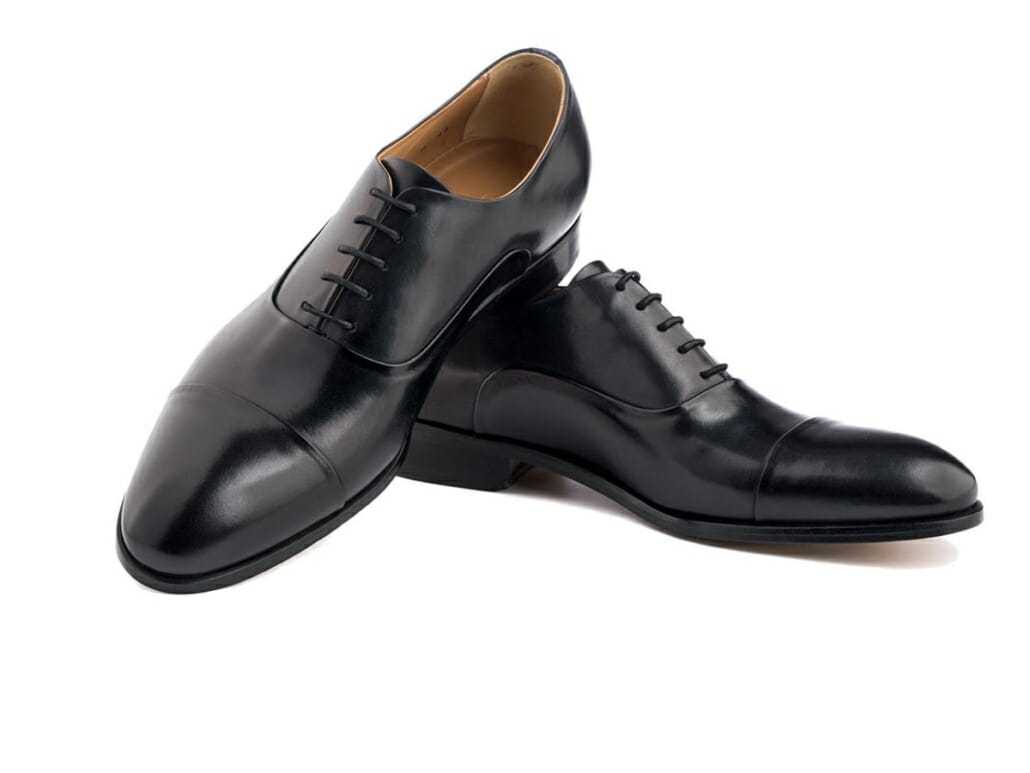
23. Derby Shoes
On the other hand, derby shoes as well as their close relative, bluchers, have an open lacing system where the eyelets are sewn onto the top of the vamp. Overall, the closed lacing style of an Oxford shoe is more formal whereas the open lacing style of derbies and bluchers is less formal. To understand all of the differences in greater depth, you can go to The Derby Shoe & Blucher Guide.
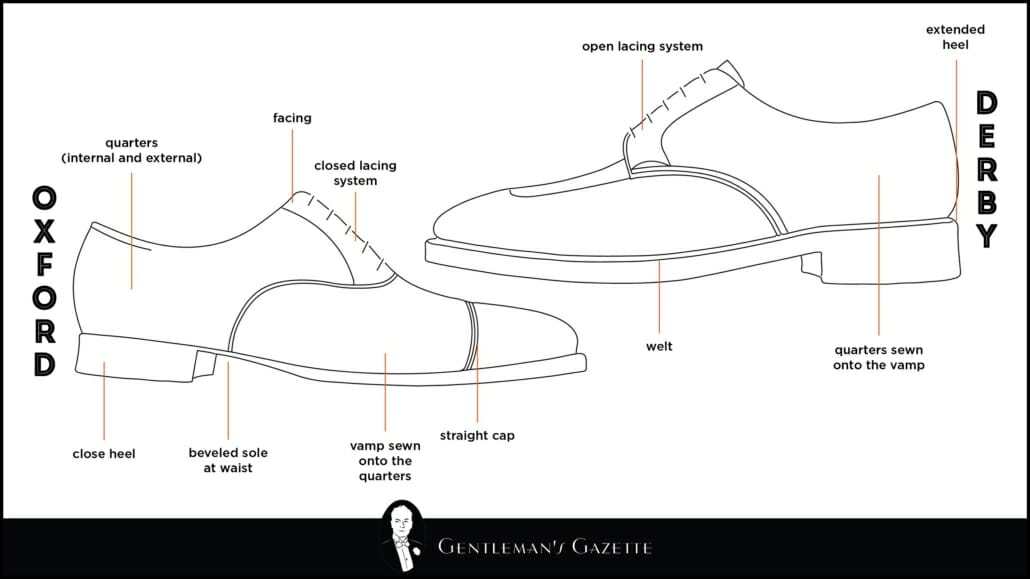
24. Broguing
You may sometimes hear Derby shoes referred to as brogues but this isn’t totally correct. In fact, the next term on our list, broguing, refers to decorative perforations often found on the toe cap of a shoe. Although they can also be found elsewhere throughout the shoe, these perforations were originally designed to be functional as water could drain out of them from shoes and boots as they were worn in wet and swampy conditions throughout Scotland and Ireland.

Today, however, broguing is purely an ornamental feature. What’s more, it can be found on both Oxfords and Derby shoes so setting up a dichotomy of Oxfords versus Brogues as the Kingsmen do isn’t a hundred percent correct.
25. Wingtip
When the broguing pattern on the top of a shoe forms a curved v or w shape this is referred to as a wingtip shoe. The wings will typically terminate toward the sides of the shoe but they can actually make their way all the way around the back of the shoe in which case, they are longwing shoes.
To summarize here, just know that while broguing is most commonly seen on derby shoes, not all derbies are brogues. If you’d like more information on broguing and wingtip styles, you can find our article on Brogues & Wingtip Shoes Guide for Men.
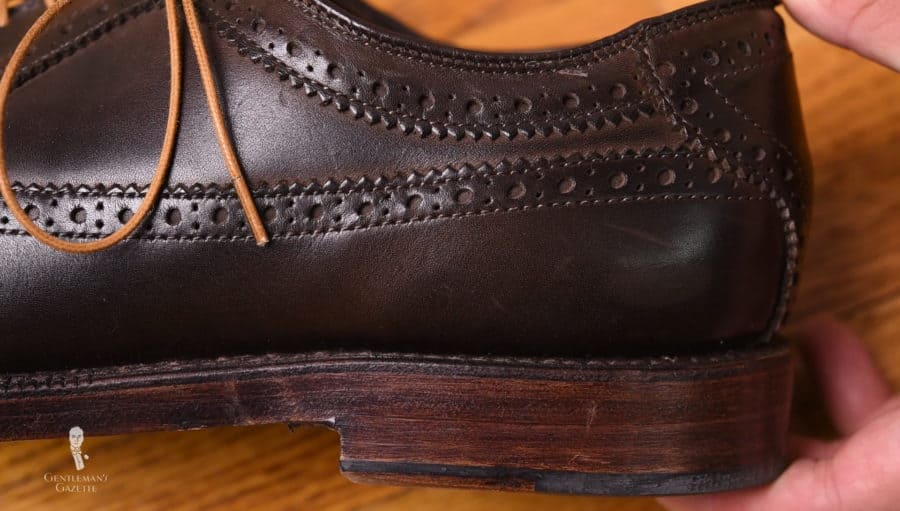
Conclusion
The 25 terms discussed here should help you to make more confident purchasing decisions and also to have better and more enriching discussions with other menswear enthusiasts. Attaining mastery of this vocabulary is just one of many steps in becoming more confident with your wardrobe and exhibiting the hallmarks of a gentleman.
How many of these terms did you know before reading? Are there others we should explore? Share with us in the comments!
Outfit Rundown
I’m wearing a somewhat adventurous color combination of pink and green. It’s grounded by my charcoal suit which features a subtle texture and pattern in its weave. My plain pink shirt features French cuffs and in them, I’m wearing platinum-plated sterling silver eagle claw cufflinks from Fort Belvedere featuring green malachite as the stone.
Also from Fort Belvedere is my pocket square in a shade we’re calling moss green and it features a pattern of printed geometric medallions in blue, red, and black and also a contrast edge in eggshell. I’m wearing the pocket square so that you can’t see the medallions but I wanted to make sure that the contrasting edge was visible in the outfit.
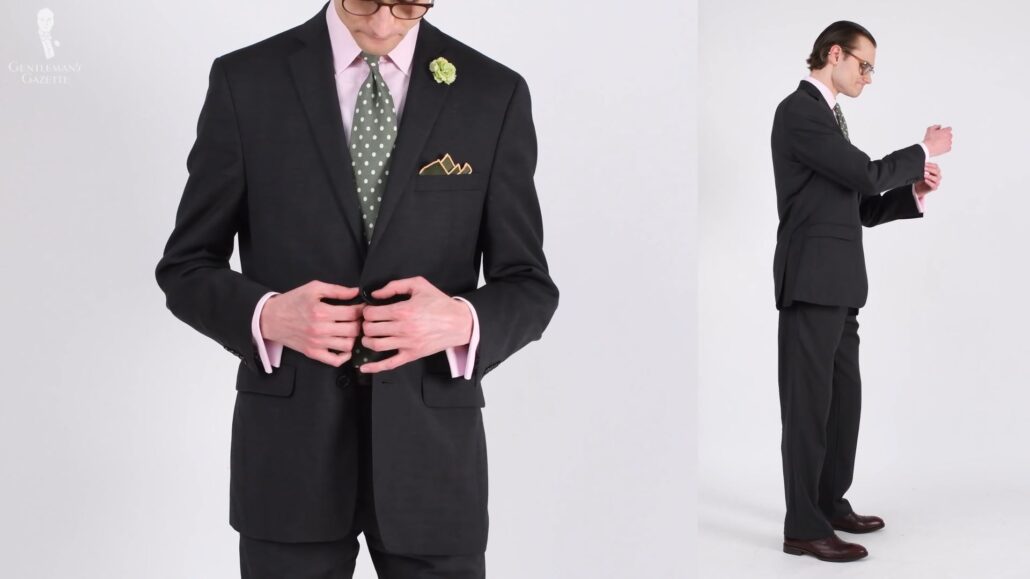
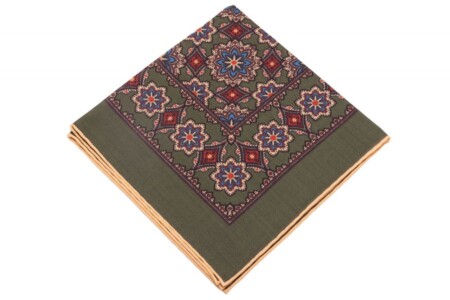
Fort Belvedere
Moss Green Silk Wool Pocket Square with Printed geometric medallions in blue, red, black with eggshell contrast edge
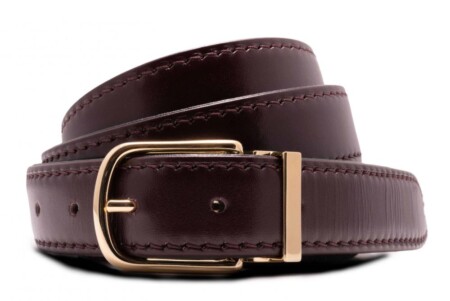
Fort Belvedere
Bordeaux Burgundy Red Calf Leather Belt Aniline Dyed Cut-To-Size – Folded Edges 3cm x 120cm
My carnation boutonniere is in a light green shade; we call this the Oscar Wilde boutonniere in the Fort Belvedere shop after the famed author who was known for wearing green carnations. My shadow striped socks are in gray and burgundy to harmonize not only with my suit, but also with my shoes and belt.
The shoes are cap toed Oxfords in a burgundy shade and the belt is in Bordeaux burgundy calf leather. It’s part of our new Fort Belvedere belt system. I’ve paired the belt with the buckle design we’re calling the Jasper which is in silver plated brass.
Rounding out my outfit today is a vintage tie from Polo Ralph Lauren in green with white polka dots. You can find all of the Fort Belvedere accessories I’m wearing today including the cufflinks, pocket square, boutonniere, socks, and belt in the Fort Belvedere shop.



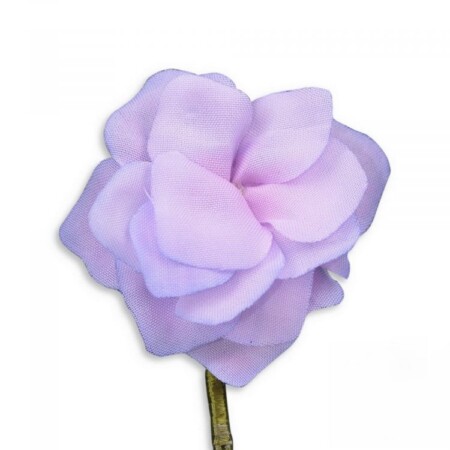
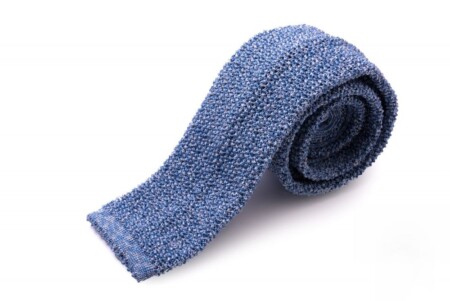
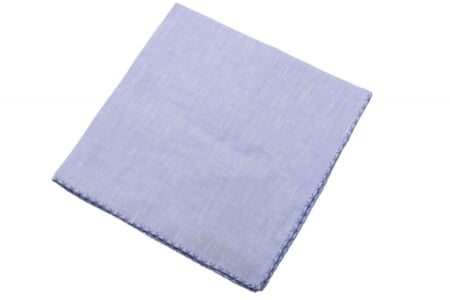

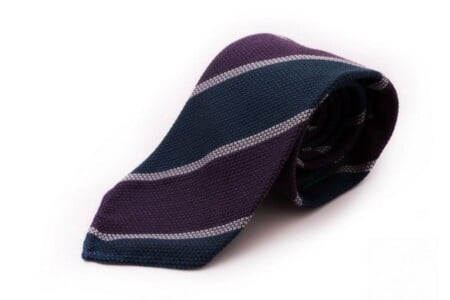
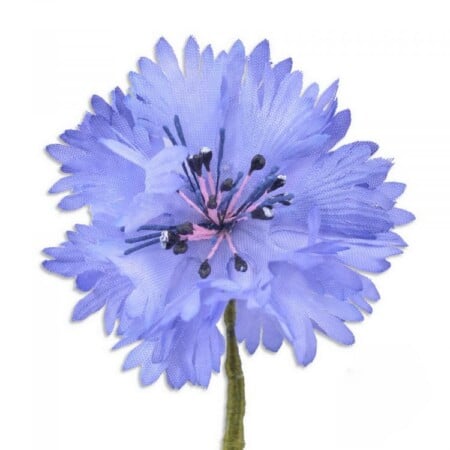
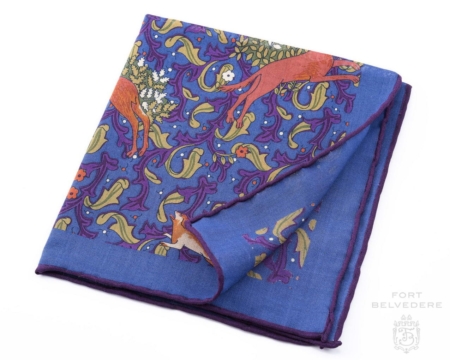

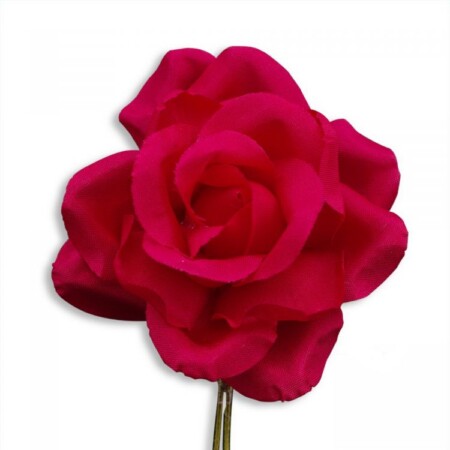
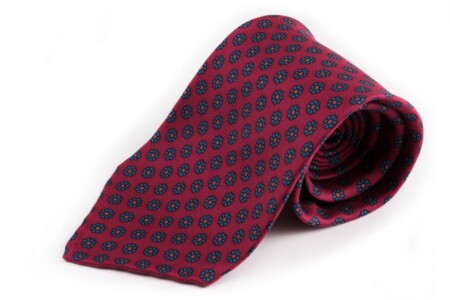
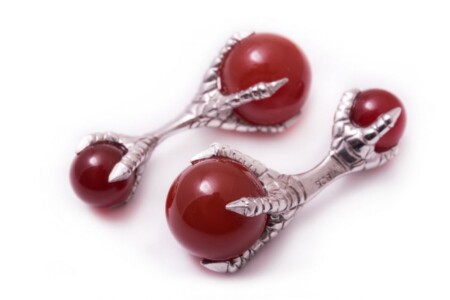
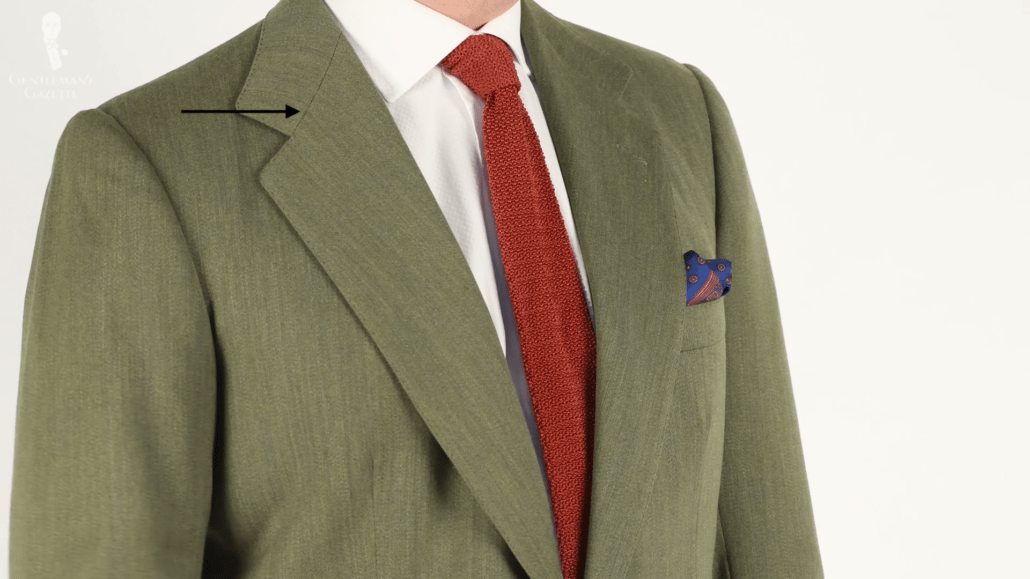
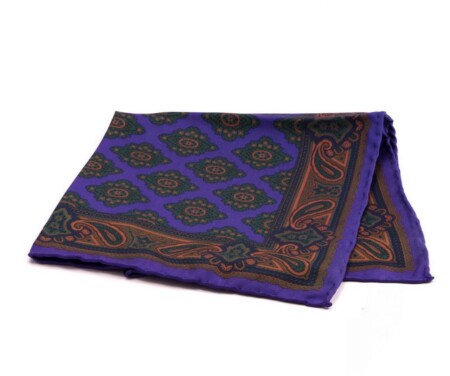
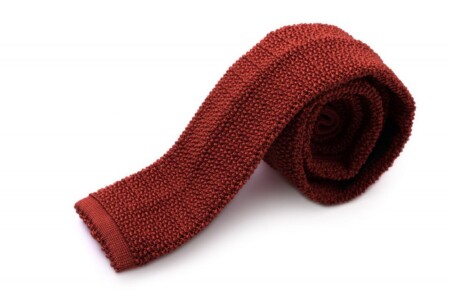
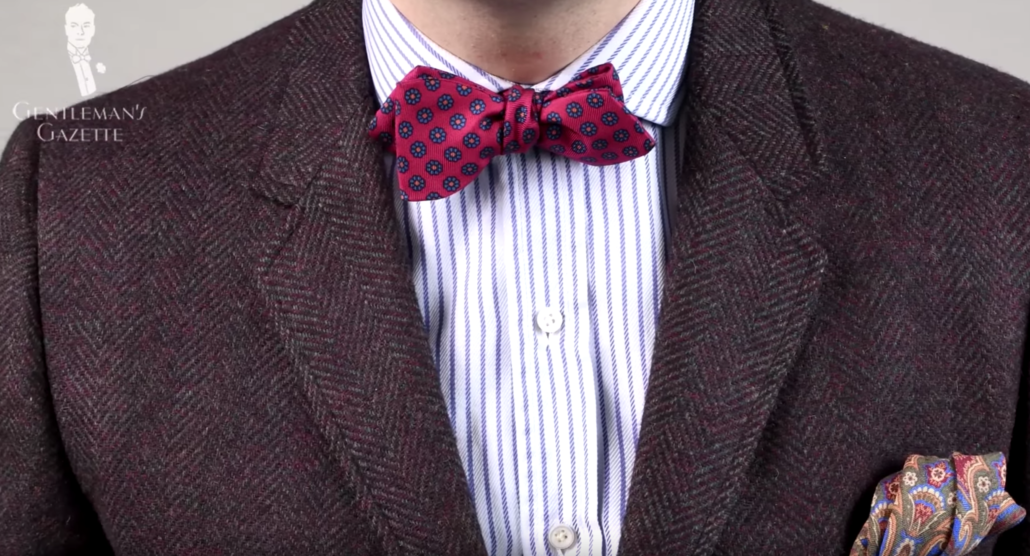
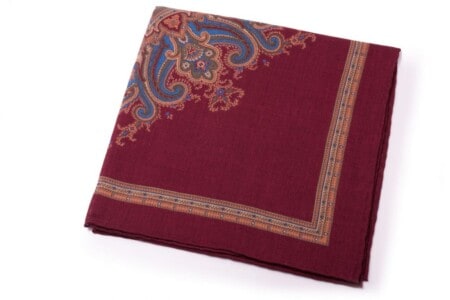
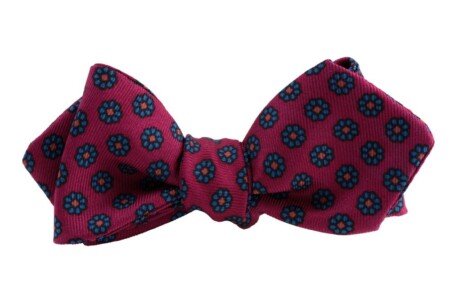

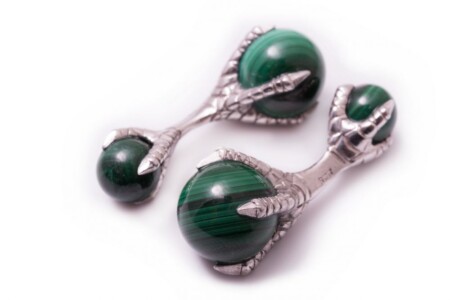
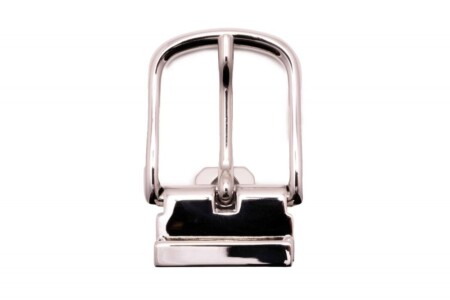
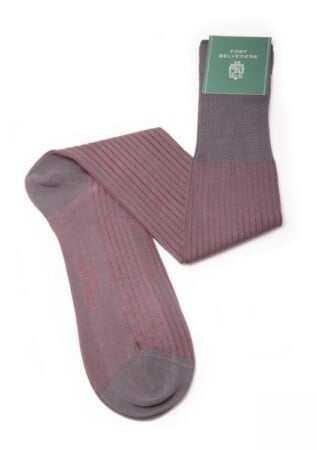
Interesting post Preston….
Re: Shoes – Reference of Bal/Balmoral to oxford and brogue and mention of “whole cut,” and types of “loafers?”
Not to mention Chelsea Boots, Monk Straps, others ?
Jacket shoulder construction – “Natural,” Cap/rope, etc.
I’m being a bit “overbaked.” Post as is, is very good.
Best,
Jim
Facinating information.
-Thank you-
Good read. While there was only one term I was not familiar with and 2 or 3 terms whose definition I was not clear on, I believe this article gave me a much better understanding of necessary terms. Thanks.
Glad to hear that, Jefferson!
Great job
Thanks
There’s so much information here. Thank you for your article. The illustrations, both photographs and drawings, were most helpful.
Thank you for your kind words, Richard!
Hi Guys, Excellent article, great for reference, one of your best articles.
Thank you from sunny Queensland, Australia
Thank you for your support, John!